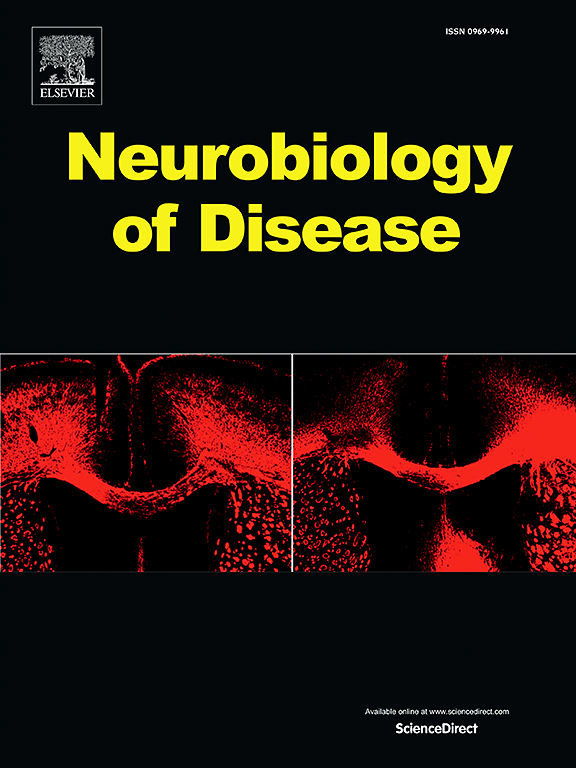Increased BNIP3-mediated mitophagy attenuates GDAP1 loss of function - implications for Charcot-Marie-Tooth disease 4A
IF 5.6
2区 医学
Q1 NEUROSCIENCES
引用次数: 0
Abstract
Charcot-Marie-Tooth disease type 4 A ((CMT4A), an autosomal recessive neuropathy, is caused by mutations in ganglioside-induced differentiation-associated protein 1 (GDAP1). GDAP1 resides in the outer mitochondrial membrane facing the cytosol and is involved in mitochondrial dynamics and function. Its perturbation affects mitochondrial shape, contact sites, redox homeostasis and cellular metabolism. In response to GDAP1 knockdown in a human neuronal cell line, we found increased mitochondrial turnover, biogenesis and mitophagy. This was associated with more lysosomal proteins in mitochondrial fractions including BCL2/adenovirus E1B 19 kDa protein-interacting protein 3 (BNIP3) and its homolog BNIP3-like (BNIP3L) – proteins involved in the recruitment of autophagy machinery via direct interaction. Flies with neural Gdap1 knockdown also exhibited upregulated levels of the sole BNIP3 ortholog. Neural expression of human BNIP3 reduced the detrimental effects of Gdap1 knockdown on eclosion and climbing ability in adult flies, while simultaneous knockdown of both genes was detrimental. These findings suggest that increased BNIP3-driven mitophagy may act as a protective mechanism, partially counteracting the cellular dysfunction caused by GDAP1 loss of function, and highlight the potential of targeting mitophagy pathways as a therapeutic strategy for CMT4A.

bnip3介导的线粒体自噬增加可减弱GDAP1的功能丧失——对charco - marie - tooth病4A的影响
4型沙科-玛丽-图斯病 A (CMT4A)是一种常染色体隐性神经病变,由神经节苷脂诱导的分化相关蛋白1 (GDAP1)突变引起。GDAP1位于线粒体外膜,面向细胞质,参与线粒体动力学和功能。它的扰动影响线粒体形状、接触部位、氧化还原稳态和细胞代谢。在人类神经元细胞系中GDAP1敲低的反应中,我们发现线粒体周转、生物发生和线粒体自噬增加。这与线粒体部分中更多的溶酶体蛋白有关,包括BCL2/腺病毒E1B 19 kDa蛋白相互作用蛋白3 (BNIP3)及其同源的BNIP3样(BNIP3L) -通过直接相互作用参与自噬机制的招募。神经Gdap1敲低的果蝇也表现出单一BNIP3同源基因的上调水平。人类BNIP3的神经表达降低了Gdap1敲低对成虫羽化和攀爬能力的有害影响,而同时敲低这两个基因则是有害的。这些发现表明,bnip3驱动的线粒体自噬增加可能作为一种保护机制,部分抵消了GDAP1功能丧失引起的细胞功能障碍,并强调了靶向线粒体自噬途径作为CMT4A治疗策略的潜力。
本文章由计算机程序翻译,如有差异,请以英文原文为准。
求助全文
约1分钟内获得全文
求助全文
来源期刊

Neurobiology of Disease
医学-神经科学
CiteScore
11.20
自引率
3.30%
发文量
270
审稿时长
76 days
期刊介绍:
Neurobiology of Disease is a major international journal at the interface between basic and clinical neuroscience. The journal provides a forum for the publication of top quality research papers on: molecular and cellular definitions of disease mechanisms, the neural systems and underpinning behavioral disorders, the genetics of inherited neurological and psychiatric diseases, nervous system aging, and findings relevant to the development of new therapies.
 求助内容:
求助内容: 应助结果提醒方式:
应助结果提醒方式:


